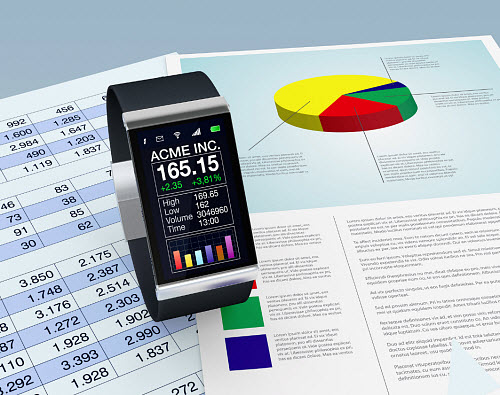Even though the wearable technology market is rapidly building in devices, applications are nearly nonexistent.
The wearables market is quickly flooding with smartwatches and other types of mobile gadgets that are worn on the wrist or other places on the body, but at the same time, there are very few applications that are available in the app stores for these devices.
Now that Android Wear has been released by Google, that is expected to change rather quickly.
Mobile app developers are already starting to enter into the race to become the leaders among the applications available for smartwatches. The popularity and growth of wearable technology is allowing them to be able to take hold of an opportunity that has been increasingly challenging – to the point of impossible, for many – when it comes to putting out a hit mobile app. As the number of applications for Android and iOS devices is now in the millions, it is difficult for a developer to stand out.
The number of apps for smartwatches is notably lower, making it far easier to be noticed by users.
What will be interesting is whether it will be games that will become the most popular among wearables – as is the case with smartphones and tablets – or whether it will be fitness and health tracker apps that will lead the way in these even smaller screen mobile gadgets.
BI Intelligence has recently released a report that provides some insight regarding the current ecosystem for wearable apps. It looked more closely at precisely why the present environment for wearable tech device applications is as limited as it is. Moreover, it also examined the way that certain categories for apps could help to make not only the developers, but also the device category, a tremendous mainstream success.
The report didn’t look exclusively at the market for smartwatches, but also looked at the broader spectrum of wearables and their apps. For example, the Google Glass apps space was examined, and the battle for dominance between Google and Apple were also discussed. Among the primary barriers that was identified was the fact that the wearables sphere is currently highly segmented. That may, however, not remain the case with Android Wear now in play, and with an iOS launch expected at some point this year.
The transition of wearables into a child’s model was nearly inevitable, and this device will launch in August.
As wearable technology just starts to take off among adult consumers in the form of smartwatches and fitness trackers, LeapFrog has now announced that it will be joining the wearables race by adding its own device, specifically for kids, to the available mix.
As kids are more comfortable with mobile devices than their parents, these wearables represent an opportunity.
Unlike in previous generations, for kids, mobile devices have been around for their entire lifetimes, making them an age group that is most likely to naturally accept and adopt the latest evolutions, such as wearable technology. LeapFrog is jumping – so to speak – on this opportunity and is betting that parents will be willing to spend $40 on a digital wristband for their kids. These new wearables will be released in August by the creator of the popular educational electronics brand for kids.
This new wearable technology device for children is meant to be worn as a form of health tracker.
The company is hoping that these wearables will take off and will help to breathe some life back into their drooping stock price. The device will be called the LeapBand, and it is meant to be worn by kids between the ages of 4 and 7. When it is turned on, it encourages children to become more active in a fun and engaging way.
While worn, the LeapBand tells children to “pop like popcorn” or it may tell them to “wiggle like a worm”. Once the activity is accomplished, the child is assigned points. Those points can later be used in order to unlock certain game features that are also available within this wristband. For example, after having accumulated a certain number of points, the wearer can use them to redeem a virtual pet. This can be a typical pet animal such as a dog or a cat, or something a bit less common like a donkey. It can even include a unicorn. As more points are built up by the children, the kids are given additional ways in which to interact with their virtual pets.
The wearable technology gamifies fitness for kids, but provides parents for parents who can track and monitor the activity levels of their kids and who can select from a list of physical challenges that they feel are appropriate.


